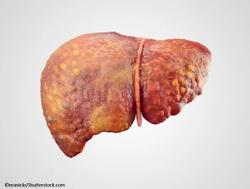© 2025 MJH Life Sciences™ , Patient Care Online – Primary Care News and Clinical Resources. All rights reserved.
Vaccines for Children Program: Do You Know the Law?
See if you recall a few basics about program eligibility and the vaccines covered by the law. It's a short quiz.
[[{"type":"media","view_mode":"media_crop","fid":"40537","attributes":{"alt":"Vaccines for Children Program Law ","class":"media-image media-image-right","height":"252","id":"media_crop_6767605845318","media_crop_h":"0","media_crop_image_style":"-1","media_crop_instance":"4172","media_crop_rotate":"0","media_crop_scale_h":"0","media_crop_scale_w":"0","media_crop_w":"0","media_crop_x":"0","media_crop_y":"0","style":"float: right;","title":"©EsHanPhot/Shutterstock.com","typeof":"foaf:Image","width":"372"}}]]Most physicians who treat children covered by Medicaid use vaccines shipped to their office at no charge to give to eligible patients. Let's test your knowledge of the basics of the program that makes this possible.
Between 1989 and 1991 a vaccine-preventable disease swept through the United States causing tens of thousands of cases and hundreds of deaths leading to the passage by Congress of the Vaccines for Children (VFC) program.
1. What organism caused this epidemic?A. Chickenpox virus
B. Pertussis bacteria
C. Haemophilus influenza bacteria
D. Measles virus
Please click here for answer and next question.
Answer: D. Measles virus.
After a CDC investigation revealed that more than half the children infected with measles were unvaccinated despite being old enough to receive the vaccine and having seen medical providers for routine care prior to the epidemic, Congress acted to fix this with the passage in 1994 of the VFC law.
The VFC law outlines who is eligible to receive the vaccine at no charge. (Providers may charge an administration fee, however.)
2. Which of the following patients is NOT eligible?A. An 18-year-old with no insurance
B. A 6-year-old Native American whose parents have an income of $175,000 per year.
C. A 5-year-old covered by an insurance plan with a $5,000.00 deductible not yet met, but that does cover vaccine costs once the deductible is met.
D. A 17-year-old who is insured but whose policy specifically states that vaccines are not a covered service.
Please click here for answer and next question
Answer: C. 5-year-old with insurance coverage.
This patient does not meet the definition of underinsured. All Native Americans and Alaskan Natives are automatically covered regardless of income or insurance status. Persons under the age of 19 years are covered if they have Medicaid insurance, are uninsured, or meet the definition of underinsured.
The VFC program provides vaccines for 16 diseases.
3. Which of the following is/are NOT covered?A. Rabies vaccine (only if patient is exposed)
B. Typhoid vaccine
C. Meningococcal B vaccine for ages 16 to 19 years
D. Rabies and typhoid
E. All of the above
Please click here for answer.
Answer: D. Rabies and typhoid vaccine are not covered by the VFC program.
The VFC follows the recommendations of the Advisory Committee on Immunization Practices (ACIP). In June, 2015, the ACIP put the two new meningococcal vaccines (Trumemba and Bexsero) into the “permissive” category meaning while it is not a universally recommended vaccine for everyone, it can be given if the provider and parent feel it is necessary. While the rabies and typhoid vaccines are medically indicated in certain situations, they are not covered vaccines by the VFC program.
References:
Centers for Disease Control and Prevention. Vaccines for Children Program (VFC). Accessed on August 18, 2015 and available at: http://www.cdc.gov/vaccines/programs/vfc/index.html



